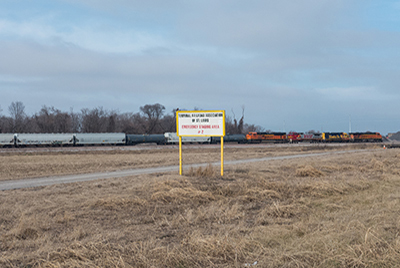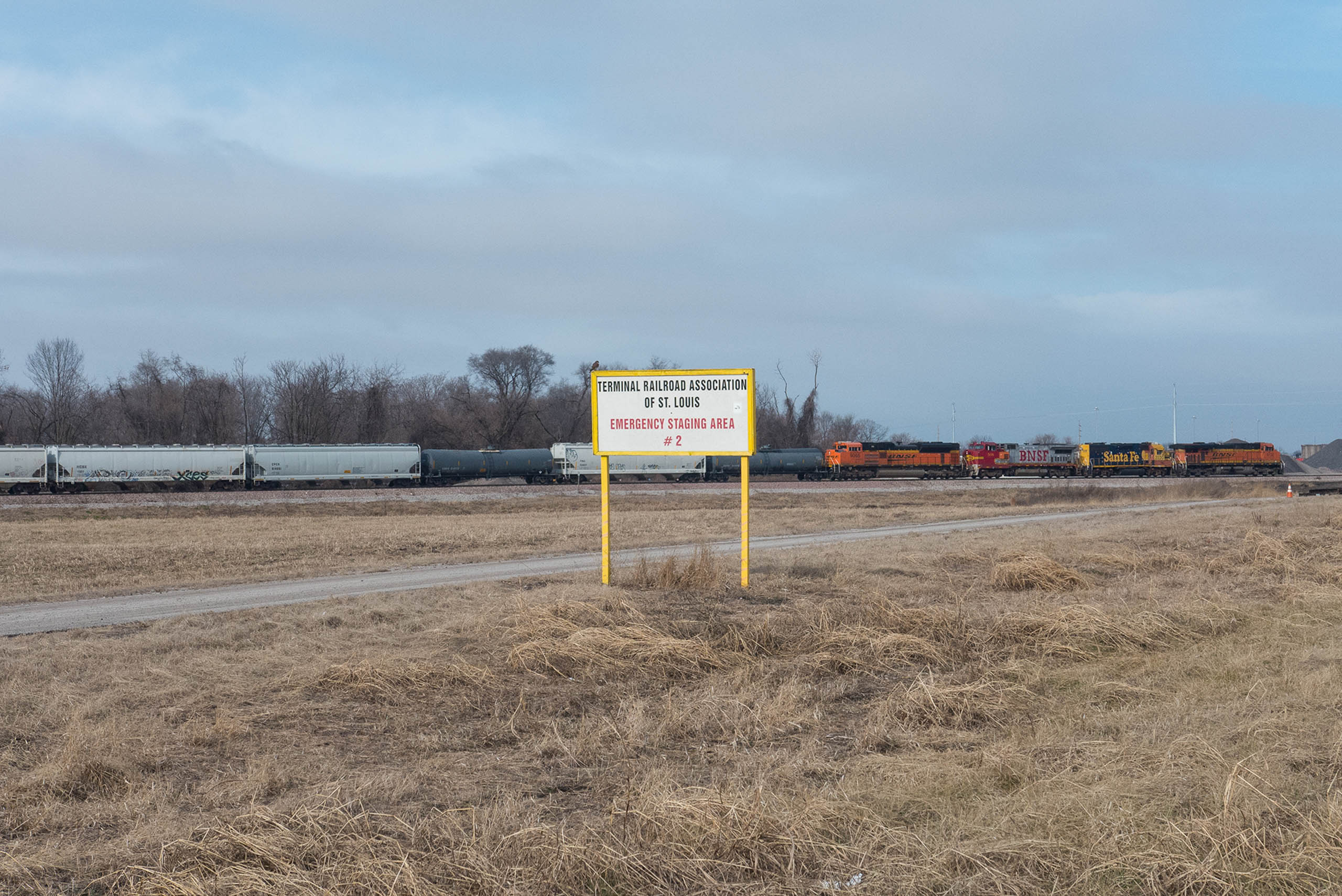



A story of American Bottom industrial and spatial history could begin and end with the Terminal Railroad Association (TRRA). As a corporation, the TRRA (and its historical antecedents) has held inordinate sway over the region’s physical landscape and urban development. As one of the most strategic landholders of the floodplain and river’s edge, the TRRA has effectively controlled access to the East Side waterfront since the early nineteenth century. The TRRA’s genealogy can be traced through the various ferry services and sundry railroad conglomerates that consolidated trade and passage across the river. With the founding and chartering of the first ferry across the Mississippi by Captain James Piggott in 1797, this region found its first infrastructural monopoly in the crossing between St. Louis and Illinois Town (as East St. Louis was then named). Sold to Samuel Wiggins in 1819, the ferry business quickly grew as Mr. Wiggins, and the subsequent corporation that would carry his name, acquired 900 acres of land on the East Side waterfront to construct terminals, elevators, warehouses, depots, and switching yards to consolidate the growing rail traffic that bundled itself along the river’s banks. Until 1874 when the first bridge crossing was completed, the Wiggins Ferry Company held an effective monopoly on all freight and passenger crossings in the area.
The TRRA enters this story as a distinct corporate entity whose many shareholders also held a majority share in the Wiggins Ferry. With a deal orchestrated by developer and speculator Jay Gould in 1889, predecessor entities came together with the six railroad interests in the region to form the TRRA. The original railroads making up the association were the Missouri Pacific Railway Company; the St. Louis, Iron Mountain and Southern Railway Company; the Wabash Railroad Company; the Ohio and Mississippi Railway Company; the Louisville and Nashville Railroad Company; and the Cleveland, Cincinnati, Chicago and St. Louis Railway Company. The Company’s present-day owners are the Union Pacific Railroad, Burlington Northern and Santa Fe Railway, CSX Transportation, Canadian National Railroad, and Norfolk Southern Corporation.
Today the Terminal Railroad Association Yards, set like a huge splinter between Madison, Illinois, and the adjacent communities of Venice and Brooklyn, is the largest such facility in the region and is the core of the association’s operations. According to the TRRA website, “approximately 30,000 cars pass through the Company's switching facility on a monthly basis and are re-directed to other destinations. The switching yard consists of eighty in-bound, out-bound, and holding tracks with a capacity of 2,200 cars at any one time. The Company operates 30 locomotives to move cars around the yard, deliver cars to local industries, and ready trains for departure.”